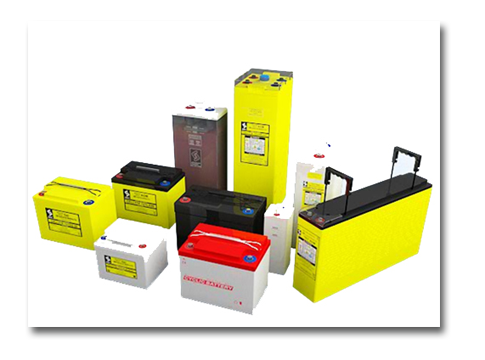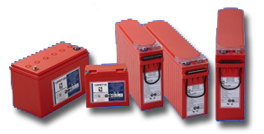Types of lead-acid batteries
Lead acid batteries are the most common for storing large amounts of energy. But when choosing your battery you will find a multitude of name : gel, AGM, VLRA, dry, open, watertight… This article will help you understand the different types of batteries and choose the best for your project.
Batteries according to their use
Starter battery
A starter battery is designed to provide an high current during very short period. It is designed to start an engine (for example a vehicle or a generator) and is not suitable for further use. A battery of this type will degrade very quickly if it is used to power an electrical device.
Starting batteries are sometimes called “Car Battery”, “batterie de trucks” or “Thin battery plates”.
Traction battery
The names of these batteries is their first use : motor power electric vehicles like forklifts. These batteries therefore generally have a good / weight capacity and volume capacity /. They are designed to recharge quickly and deep enough to withstand shockss.
Stationary battery
These batteries are those used in power supplies especially for computer systems or telecommunications. They are designed to be recharged constantly being unloaded and rarely, they are therefore provided for a limited number of cycles. The depth of discharge authorized may vary greatly from one manufacturer to another.
Solar battery
These batteries are designed to be used in solar photovoltaic. They are designed to support a high number of cycles (as they will be discharged and recharged every night every morning), their depth of discharge is generally good but can vary greatly from one model to another.
Les batteries de servitudes have roughly the same characteristics as solar batteries.
Batteries according to their technology
 Liquid electrolyte battery
Liquid electrolyte battery
A liquid electrolyte battery is a battery acid-containing liquid. These batteries can only function properly if they are laid flat, they are ill-suited for such a vessel subject to the roll. In cas Cass, acid can escape that is a danger to humans and the environment.
Performance liquid electrolyte batteries vary greatly from one model to another. The liquid electrolyte batteries particularly fear the cold : If the electrolyte freezes, the battery can not be used.
Open battery
Open battery is a battery liquid electrolyte with stoppers to fill the. Open battery are not waterproof : the liquid that is inside is evaporated little by little, it is necessary to regularly check the level and top up if necessary with distilled water.
An open battery can be either :
- Dryer, a dry battery does not yet contain liquid, it will fill the sulfuric acid before it can be used. Dry batteries have the advantage that they can be transported safely. Especially dry batteries are accepted in aircraft.
- Wet, a wet battery already contains liquid. Are rarely found wet batteries in commerce because they are dangerous to transport and can not be stored long.
Sealed battery
A battery is a sealed battery non-liquid electrolyte or with a system for preventing the evaporation. These batteries do not need to be fulfilled before use and do not require maintenance. They are accepted in air transport but still presents a risk in case of breakage (FUITE d'acidic).
These batteries are also called batteries scellées, Battery A valve, gas recombination batteries, batteries VLRA, batteries “no maintenance” or “maintenance free“.
A noter : English there are two types of sealed batteries “non-spillable battery” that are accepted in the aircraft and “sealed battery” which are not.
AGM batteries
AGM batteries are a type of sealed battery. In an AGM battery, but the electrolyte liquid is held in place by fibers. So there is no risk of leakage and the battery can operate without being perfectly flat. AGM batteries can usually support a large number of cycles and depth of discharge high. They have a good resistance to cold.
Batterie gel
Gel batteries are a type of sealed battery. In a gel battery, the electrolyte is gelled. This eliminates the risk of acid leakage in case of breakage and make the battery work in all positions.
Gel batteries can usually support a large number of cycles and depth of discharge high. They are more resistant to cold than conventional batteries but less than AGM batteries, they often have a high resistance to heat and Low self-discharge rate.



